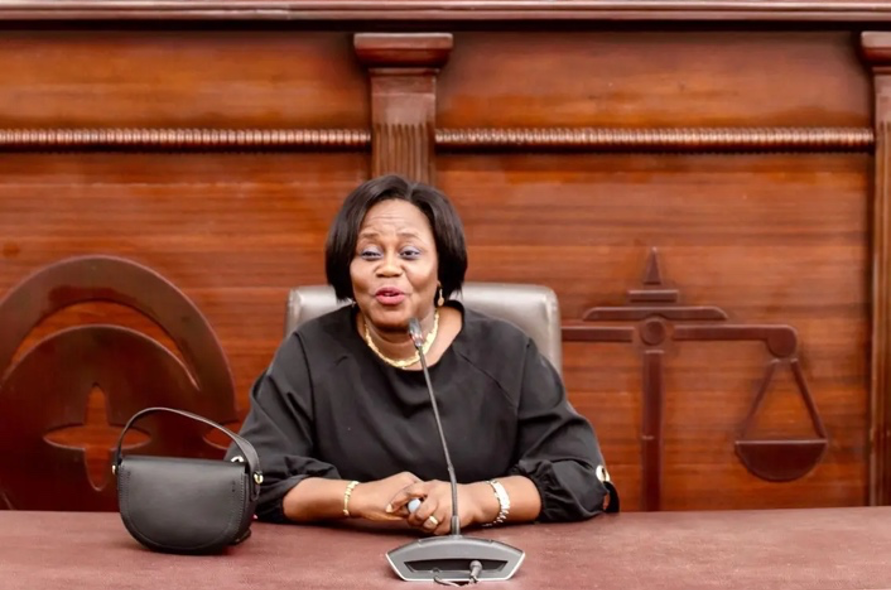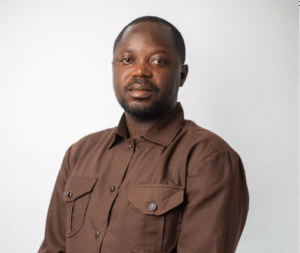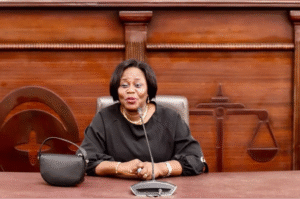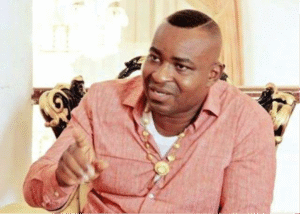
• Lawyer: “Removed means removed, court door shut
A forensic legal analysis by private practitioner and New Patriotic Party member Clement Opoku Gyamfi has laid bare what he calls a “mischievous” campaign to see Gertrude Araba Essabah Torkonoo retain a place on the Supreme Court after her removal. In a tightly reasoned opinion, Gyamfi insists the constitution leaves no room for a dismissed chief justice to simply revert to a seat on the bench.
Torkonoo, who instructed lawyers to challenge her dismissal under Article 146 of the 1992 Constitution, is pursuing a legal route that, if successful, would allow her to remain a member of the Supreme Court. Gyamfi rejects that possibility. “With the greatest of respect,” he writes, “proponents of this school of thought have not been able to support their position or argument with any legal authority.” Allowing a return, he warns, would be legally incoherent and politically corrosive.
Three core questions
Gyamfi builds his case around three discrete constitutional questions, each intended to strip the controversy of rhetorical excess and test the arguments against text and precedent.
1. Can a non-Supreme Court judge be appointed Chief Justice?
Gyamfi points to Article 144(1), which provides that: “The Chief Justice shall be appointed by the President acting in consultation with the Council of State and with the approval of Parliament.” He notes the framers set a qualification threshold, notably in Article 128(4), but do not say the chief justice must be taken from serving members of the Supreme Court. “Any lawyer in practice who is fifteen years or more can be appointed as a Chief Justice,” he says, adding that Ghana’s practice of appointing incumbents is tradition, not constitutional compulsion.
2. Must the Chief Justice first have been a Supreme Court or superior-court judge?
Gyamfi stresses that Article 144(2)- which deals with the appointment of other Supreme Court justices- cannot be read as restricting the President’s power under Article 144(1). “Once you qualify under Article 128,” he argues, “the President can validly appoint you as the Chief Justice.” In short, judicial custom has hardened into an assumed rule; the constitution does not.
3. Does removal as Chief Justice bar a return to the Supreme Court bench?
This, Gyamfi says, is the decisive question. Article 146(1) provides that: “A Justice of the superior court or a chairman of the Regional Tribunal shall not be removed from office except for stated misbehaviour or incompetence or on the ground of inability to perform the functions of his office arising from infirmity of body or mind.” Gyamfi’s reading is stark: removal under Article 146 severs the judicial office. Allowing a dismissed chief justice to resume judicial duties would, he writes, “lead to absurdity”, for example, a judge removed for bribery returning to sit on cases would fatally undermine the notion that justice had been done.
To buttress his argument, he cites precedents referenced in his note, Frank Agyei-Twum v Attorney-General and Peter Utter Dery v Tiger Eye P.I., as illustrative of a wider principle that removal under the constitutional procedure extinguishes the judicial mandate.
Constitutional framework and practical stakes
Gyamfi maps the relevant constitutional provisions, Articles 128, 144 and 146, to show the separation between appointment and removal and to demonstrate why an interpretation that permits reversion is untenable. Article 128(1) states that “The Supreme Court shall consist of the Chief Justice and not less than nine other Justices of the Supreme Court,” while Article 128(4) sets minimum qualifications: “A person shall not be qualified for the appointment as a Justice of the Supreme Court unless he is of high moral character and proven integrity and is of not less than fifteen years standing as a lawyer.”
For Gyamfi, the point is straightforward: the removal mechanism in Article 146 applies to “a Justice of the superior court,” a class that includes the Chief Justice. To parse removal as affecting only the office of Chief Justice but not the underlying status as a justice would be to produce a legal inconsistency with dangerous practical consequences. As he puts it, permitting a dismissed chief justice to “slip back onto the bench … would undermine public confidence in the courts and make a mockery of judicial integrity.”
What it would mean in practice
If Gyamfi’s interpretation prevails in public and professional debate, the implication is clear: a chief justice removed by the constitutional process does not merely lose the administrative office; they lose the judicial office, too. That reading narrows the scope for any post-removal manoeuvres that would keep a removed figure within the temple of the judiciary.
Gyamfi’s paper is unambiguous in tone. “The now removed Chief Justice cannot hold herself as a justice of the Supreme Court and therefore cannot go back there to work,” he concludes, insisting that any contrary construction “would erode the very principles of accountability the framers sought to protect.”
A case still to be decided
The legal challenge launched by Torkonoo’s team remains active. Gyamfi’s analysis will be cited and contested in the filings and argument to come. For now, his contribution frames the constitutional debate in narrow, textual terms: appointment and removal are distinct; tradition cannot override written law; and, above all, to permit a return after removal would subvert the integrity of the bench.
Whether the courts will accept his uncompromising reading remains to be seen. But in a fragile polity where public trust in institutions is a scarce commodity, Gyamfi’s warning is clear: the constitution’s removal procedure was designed to exclude the very possibility of a judicial comeback.






